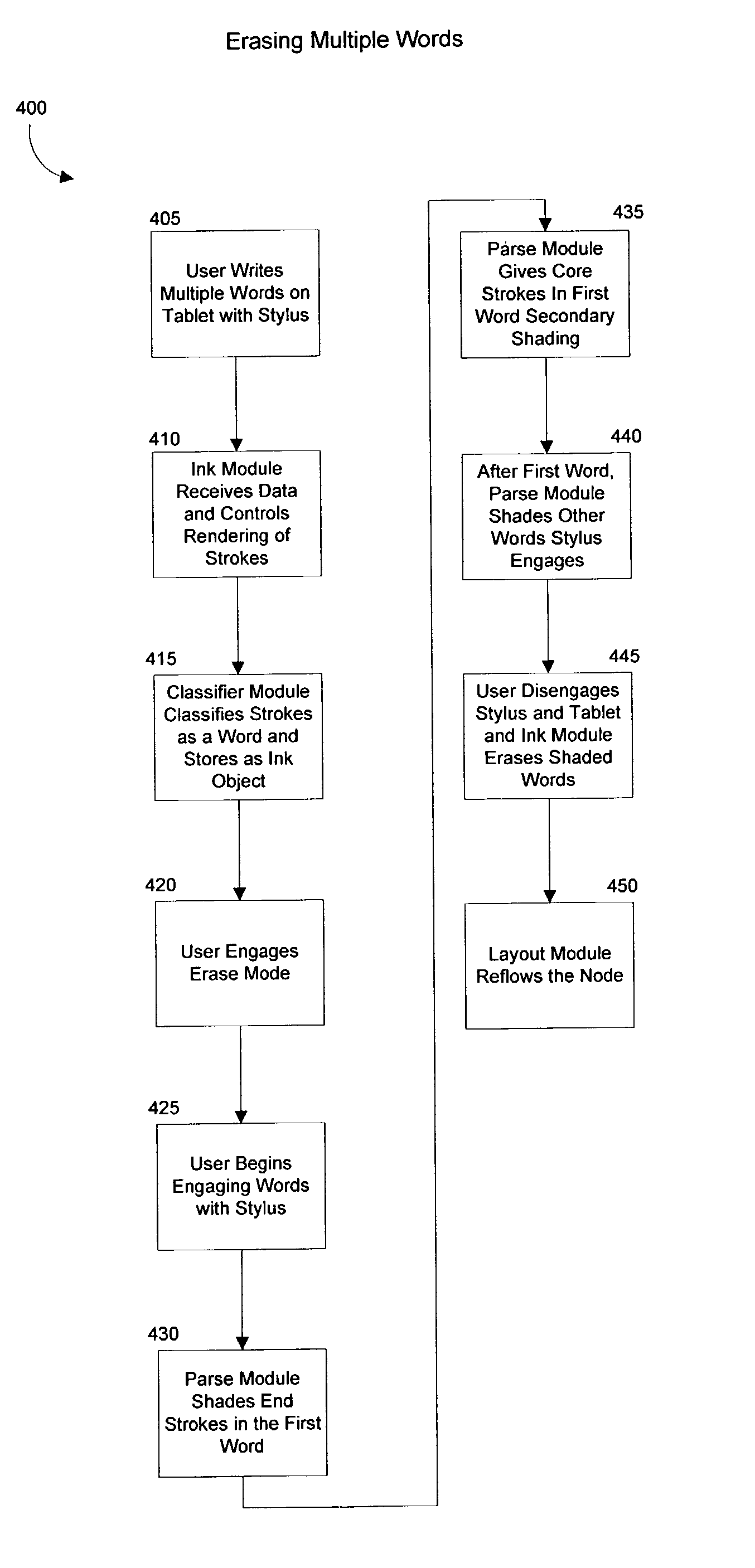Method and system for editing electronic ink
- Summary
- Abstract
- Description
- Claims
- Application Information
AI Technical Summary
Benefits of technology
Problems solved by technology
Method used
Image
Examples
Embodiment Construction
[0034]The present invention enhances the performance of computing devices, such as electronic tablets, that convert a user's handwriting strokes into electronic ink in an electronic document. Specifically, the present invention improves upon the user's ability to edit electronic ink. A user typically performs editing on electronic ink with a handheld device, such as a stylus, that accompanies the electronic tablet. The present invention allows a user to quickly and precisely identify electronic ink strokes that are to be edited. For example, a parsing module can take recognized editing gestures, such as a strikethrough, and accurately identify which handwriting strokes the gesture is associated with. The parsing module can also provide feedback to the user as to which handwriting strokes are selected for editing. For example, the parsing module can highlight or shade the particular strokes in a word that are selected to be erased before the erasing function is performed. The feedbac...
PUM
 Login to View More
Login to View More Abstract
Description
Claims
Application Information
 Login to View More
Login to View More - R&D
- Intellectual Property
- Life Sciences
- Materials
- Tech Scout
- Unparalleled Data Quality
- Higher Quality Content
- 60% Fewer Hallucinations
Browse by: Latest US Patents, China's latest patents, Technical Efficacy Thesaurus, Application Domain, Technology Topic, Popular Technical Reports.
© 2025 PatSnap. All rights reserved.Legal|Privacy policy|Modern Slavery Act Transparency Statement|Sitemap|About US| Contact US: help@patsnap.com



